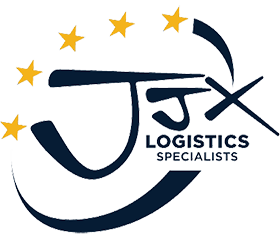Ali Karim talks about the Logistics of Dangerous Goods between UK and Mainland Europe.
As the clock ticks relentlessly toward Brexit - Journalists Joe Mayes and Alex Morales of Bloomberg Business Week speculated upon the implications of Great Britain leaving the European Union vis-a-vis cross-border trade, and preparations from international logistics operators such as JJX Logistics.
Read the full Bloomberg article >“The Day After Brexit: What a Crash Out of the EU Might Look Like”
The Logistics of Dangerous Goods
A decade ago, Maersk Shipping line reported that 17% of containers/vehicle transport units entering the UK contain bulk and packaged dangerous goods (in some shape or form). Today that percentile may well be higher.
Trade disruption poses serious issues for the Chemical and Pharmaceutical Sectors [as well as related manufacturing industries], who are critically dependent upon the seamless flow of both raw materials and finished product.
Beyond speculation, no-one knows in precise terms the implications that Brexit will pose to cross-border trade.
One certainty is to ensure alignment to a robust and established logistics partner for your Logistics of Dangerous Goods. One experienced in all aspects of cross-border movements from warehousing as well as road/sea transportation and versed in the complex regulatory aspects of ADR and IMDG compliance of ambient as well as temperature-controlled products.
In 2007, Karl Lumbers of Marine Insurers the P & I Club, indicated that the offshoring of chemical manufacture was proving challenging to the Maritime industry, as the quality control aspects on goods outward procedures, had not kept pace with the growth in manufacture. Packaging that is suitable for road transport may not be robust enough to withstand rolling and pitching at sea [inside a container or truck] in bad weather. Lumbers added “We are seeing more and more incidents. Massive explosions are occurring, destroying cargo and ships, and people are getting killed at sea”.
One of many critical aspects in consigning dangerous goods by sea is adherence to the IMDG Code ensuring goods are packed robustly, and the dangerous goods declaration accompanying the freight [often referred to as a DGN, Dangerous Goods Note] is accurate. The Maritime DGN must be signed by a competent person from [or on behalf] of the consignor, and details the Hazardous goods information, UN Number, Packing Group, Description of Goods, Packing instructions et. al. It is mandatory that security within the supply chain must be factored for High Consequence Dangerous Goods [HCDG].
This Dangerous Goods Declaration [DGN] has to be provided to the shipping line, as there are restrictions on certain products, specific ferry/shipping routes, including quotas on passenger vessels and dedicated freighter crossings.
The Kemmler Classes that require additional attention are Classes 2 [Compressed Gases], 6.2 [Biologically Infectious], 5.1 and 5.2 [Oxidizing Agents and Organic Peroxides]. Naturally, Classes 1 [explosive] and Class 7 [Radioactive] are special cases.
Shipping lines check the Dangerous Goods Notes before agreeing proposed shipments, but ultimately, the Ship’s Master [aka ‘Captain’] via his Chief Officer has the final say.
Though there are similarities between ADR and IMDG carriage regulations, however, there are also crucial differences as to what can be packed together on a pallet, or even shipped on the same container-unit. An example in a divergence between Road [ADR] and Sea [IMDG] regulations are Class 8 [Corrosive products]. Acids can be shipped on the same vehicle/pallet as an Alkali by road, but cannot be mix-loaded for sea carriage under the IMDG Code [or be within the same vehicle or container-unit]. This is because under certain conditions, acids when in contact with alkali can generate heat via an exothermic reaction leading to toxic, corrosive or flammable fumes being evolved, which could ultimately result in a fire and/or explosion in the cargo hold while the vessel is at sea.
Regulatory details and compliance for Hazardous Goods on Multi-Modal [Road-Sea] carriage can be obtained from your Dangerous Goods Safety Advisor [DGSA] as well as from the Maritime and Coastguard Agency [MCA].
Care must be undertaken when ‘unloading’ and ‘de-stuffing’ containers as goods may have moved in transit and leaked. The vehicle/container-unit and the vessel’s cargo-hold could become saturated with noxious, toxic and/or flammable vapour.
When a container/vehicle-unit containing dangerous goods is presented to the dock-side [and consignee] - it is vital trained staff extend caution, gingerly opening the container doors.
The container/transport unit must be well ventilated (and away from sources of ignition), doors secured and left to stand for a minimum of 20 minutes before the unit is unloaded. A robustly considered [and documented] risk assessment is vital for stuffing and de-stuffing containers [and vehicles] by a professionally experienced operator such as JJX Logistics.
Useful Links
For more information about shipping goods by sea
To download an IMDG Code Compliant Dangerous Goods Declaration Note [DGN]
PDF Download “Making Brexit Work for the Chemical Industry” from The Chemical Industries Association
For all your Logistics of Dangerous Goods, ADR, IMDG [and Non-Hazardous] warehousing and transport requirements [UK Mainland, Ireland and Mainland Europe] please contact;
Adam Bull, Commercial Director
eMail: adam.bull@jjxlogistics.co.uk Mobile : +44 (0) 7876 626 167
Ellis Blackham, Logistics Accounts Manager
eMail: Ellis.Blackham@jjxlogistics.co.uk Mobile : +44 (0)7703 838 474
For Technical Queries & Chemistry Advice
Contact Ali Karim FRSC CChem, Technical Manager
eMail Ali.Karim@jjxlogistics.co.uk Mobile : +44 (0) 7812 584 249
Blog by Ali Karim. Ali has over 30 years’ experience of dealing with chemicals and gas in a production as well as in a sea and road transport environment at a senior management level in the UK and overseas with Interoute Transport Services, Gas and Equipment Ltd, Linde Gas UK Ltd, United Transport, Inspectorate International [Saudi Arabia] and Transport Development Group [TDG].
He was the co-founder and Managing Director of Hazchem Network Ltd [2004-2018] and currently works in a technical capacity for JJX Logistics and Keedwell Scotland.
We're ready when you need us

